11 January, 2001
I have made a trip of over 10,000 miles to collect soil. My father was
willing to let me collect as much soil as I wanted out of his back yard. In
fact he suggested I could move a pile of soil from one area of the backyard
to another. It just wasn't the same.
The soils that Dr. Virginia and Dr. Wall are investigating are some of the
oldest and driest soils on the planet. The only place you can find this
type of soil is in the Dry Valleys of Antarctica. Once the soils are
collected from the dry valleys and brought to the lab, they are placed in
the refrigerator. Keeping the soils cool helps to simulate the field
conditions. There are two main categories that the lab experiments fall
into. The first is nematode extraction and the second is soil chemistry.
Nematodes (microscopic worms) represent the highest invertebrate in the dry
valley soil food web. There are four endemic species found in the dry
valleys, although Plectus frigophilus has only been found in a few soils.
The three species that are the most common: Scottnema lindsayae, a
microbial feeder (bacteria and yeast), Plectus antarcticus, an
omnivore-predator, and Eudorylaimus antarcticus. For nematode extraction,
the worms are extracted by mixing adding a sugar solution to the sample.
Due to a density difference the worms float to the surface, then the
solution is filtered through a fine screen and the nematodes are collected.
The final step is to use a microscope and count the sample.
The soil chemistry involves collecting information about soil pH,
conductivity, extraction of salts, moisture content, total nitrogen and
total carbon.

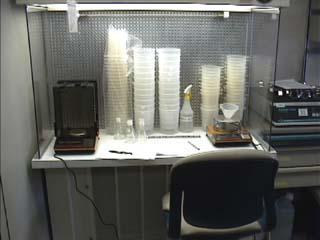
Flow chamber in which the soil samples are massed
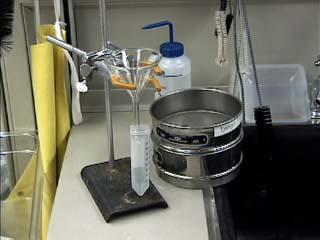
Measuring the soil pH using the TI calculator and pH probe that I brought from Hanover High
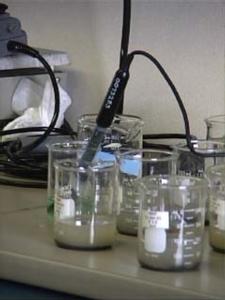
Soil pH is being collected with the Texas instruments calculator and Vernier pH probe that I brought from the high school.
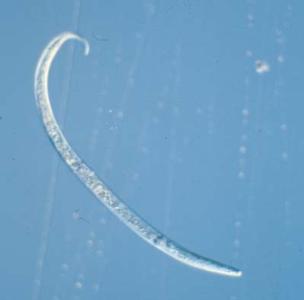
Plectus antarcticus (photo courtesy of Colorado State University)
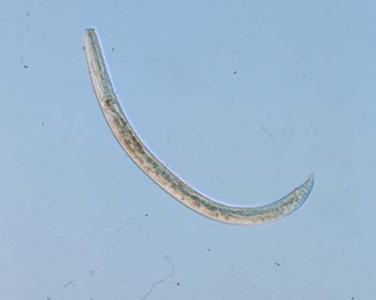
Scottnema lindsayae (photo courtesy of NREL at Colorado State University)
Contact the TEA in the field at
.
If you cannot connect through your browser, copy the
TEA's e-mail address in the "To:" line of
your favorite e-mail package.
|
